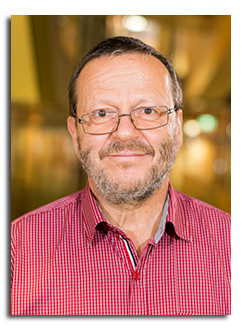
Abstract
Lock-in thermography (LIT) is the technique of choice for imaging inhomogeneous dark current densities. Therefore dark LIT (DLIT) is mostly used for qualitative shunt imaging, both under forward and reverse bias. However, both DLIT and illuminated LIT (ILIT) can be used for a number of other quantitative imaging and analysis methods on solar cells, which will be introduced in this talk. This is first the DLIT-based 'Local I-V' method. Here DLIT images taken at several biases are converted into current density images, and each image pixel is fitted to a two-diode model. This leads to images of J01, J02, n2, and Gp = 1/Rp, which are converted by the software into images of efficiency-relevant cell parameters. Dark and illuminated I-V characteristics can be simulated for certain regions and for the whole cell, leading to predictions of local and global efficiency parameters. By these investigations the influence of certain regions, like the cell edge, shunts, or crystal defect regions, on the efficiency can be estimated realistically for various illumination intensities. An alternative efficiency imaging method is based on ILIT investigations. This method has certain advantages but also certain limitations compared to DLIT-based 'Local I-V', which will be discussed. Both ILIT and DLIT can be used to image the short circuit current density Jsc, if the global short circuit current is known. This Jsc distribution is needed for performing a realistic efficiency simulation of mc cells, a corresponding option is included in the 'Local I-V' software. Finally, a new DLIT method for performing depth-dependent investigations will be introduced.
Click here to see all available video seminars.
Click here to go to the SPREE HOMEPAGE.
Brief Bio
- Ph.D. in Physics at Leipzig University in 1980 on Deep Level Transient Spectroscopy (DLTS).
- Working until 1992 at Academy Institute oft Solid State Physics and Electron Microscopy in Halle on Scanning DLTS.
- Since 1992 working at Max Planck Institute of Microstructure Physics in Halle.
- Main topic: Local characterization of solar cells by imaging methods like lock-in thermography, luminescence imaging, SEM-EBIC, and (S)TEM.
- Several hundred publications in journals and at conferences.
- Author of a book on lock-in thermography.
